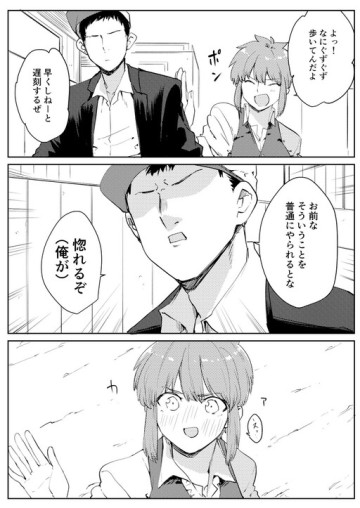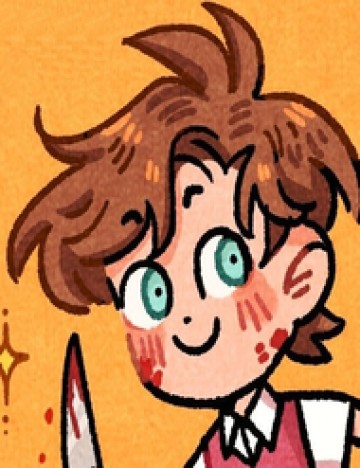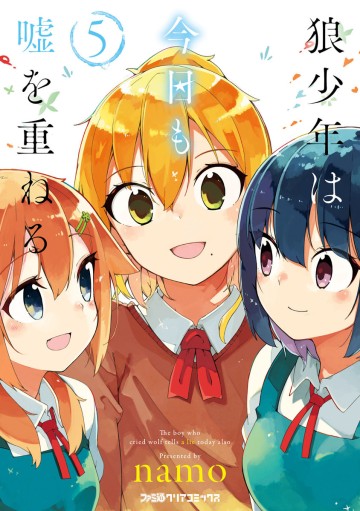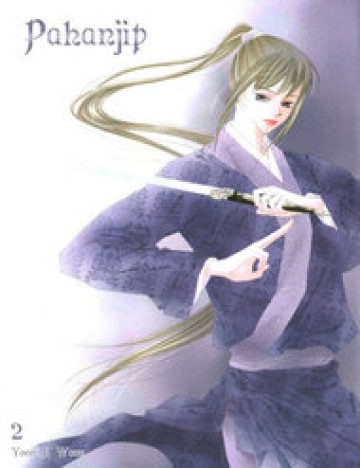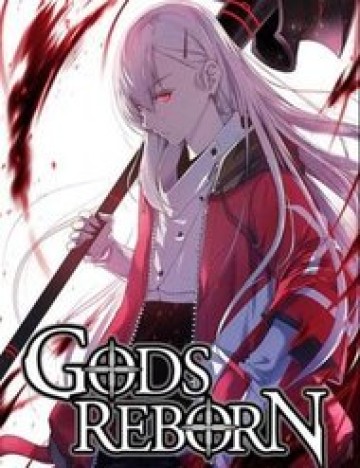Best Anime 2015 Fall

Fall 2022 is a historically loaded season of anime, the result of concentrating essentially a year’s worth of top talent in one single burst through bold and sometimes aggressive management. It more than deserves a deep dive into many of these titles and the teams behind them—the accomplished veterans, very promising youngsters, and experimental artists leading their own projects, as well as the production circumstances behind this madness.
-Chainsaw Man -Mob Psycho 100 III -Do It Yourself!! -Bocchi The Rock! -Yama no Susume: Next Summit -Pui Pui Molcar: Driving School -POP TEAM EPIC Season 2 -Mobile Suit Gundam: The Witch From Mercury -The Tatami Time Machine Blues -Arknights: Prelude to Dawn -Play it Cool, Guys -Bleach: Thousand-Year Blood War -Other Titles
Chainsaw Man (PV) Director: Ryu Nakayama Chief Episode Director: Masato Nakazono Character Designer, Chief Animation Director: Kazutaka Sugiyama Demon Design: Kiyotaka Oshiyama Action Director: Tatsuya Yoshihara Art Director: Yusuke Takeda Composer: kensuke ushio
Kevin: I suppose there’s no better place to start a look at an outrageously loaded season than with the title garnering the most attention and excitement, perhaps historic highs levels of them. Chainsaw Man has been a phenomenon in a way that very few yet unadapted manga series can be, and by the time it received an anime, the project pressed all the right buttons to become a megahit. The dazzling production values, the marketability of the style they’ve gone with, the brand power, or even the timing to unleash an all-stars team as the recognition for the specific type of flashy creator that packs this team is at an all-time high, everything about it screams massive success. And that’s something that studio MAPPA will be delighted about, as they positively surprised me by being the sole investors of this title and avoiding the ever-so-common executive producers from other companies meddling regardless; incidentally, this isn’t even the only popular title from this season to forego a committee, something you wouldn’t expect from listening to the studio’s unpaid propaganda machine.
As you likely know, leading the project is series director Ryu Nakayama. Given how perfectly arranged for success the project is, then, why entrust it to a youngster with essentially no experience heading a narrative? While we’ll have time to get to the nitty-gritty of the project’s background during our coverage of the show, Nakayama’s qualities are self-evident regardless. We’re talking about an attractive action and effects animator, specialties that never came at the cost of deprioritizing character expression, as the most extreme sequences in Yozakura Quartet: Hana no Uta proved—arguably the moment where a young Nakayama leveled up from an exciting prospect to an ace of the present. The idea of fluidity is grossly overused when it comes to animation, becoming a catch-all term for praise even in cases where the style is anything but smooth, but Nakayama’s flow is endlessly satisfying in that way without requiring an outrageous number of drawings.
As one of the most notable members of anime’s second wave of webgen animators, Nakayama also boasts of an enviable set of connections; a quality of his that isn’t only a factor in CSM’s foundation, but is also being expanded in every direction. You need to look no further than the core staff to find his mentors and friends, equally skilled individuals like Tatsuya Yoshihara who in turn attract interesting acquaintances of their own—and thus starts the sakuga magnetism process that we often allude to when it comes to particularly loaded productions, the one good instance of the rich getting richer. At the same time, Nakayama has taken—or rather, personally created—the opportunity to take young artists with no commercial animation experience under his wing. These artists are being directly mentored by an exceptional craftsman, and in exchange, this is strengthening Nakayama’s position as someone who can tap into the raw yet powerful pool of young indies.
This is to say that, while I understand the apprehension of fans pondering if someone who had never directed a show was ready for a title of this magnitude, Nakayama’s presence alone offers massive perks that are obvious to anyone with even the faintest idea of how the anime industry works. It’s easy to idealize directors as visionaries who only makes creative choices, but when it comes down to it, the job involves countless technical checks, and you might be screwed if your personality and net of relationships don’t help you secure a team with the right personnel. Nakayama embodies all the solutions that are easy to take for granted as a viewer, and for what it’s worth, the deeply affecting understated identity narrative of his Eve music video Raison d’Etre proved that he’s more than a glorified manager with technical expertise. Between the production muscle we know he packs, and the creative finesse that he’s hinted to possess, CSM has all the ingredients to kick ass in a major way.
Is there a catch to any of this, then? Perhaps not, but a struggle, absolutely. Creating art is not a simple mathematical equation, even in a generous scenario where you can more or less ignore time—now that’s a number that can make or break your project. CSM does indeed have all the right ingredients for a very flashy success, but no matter how many palpable assets you have, there’s no guarantee that you’ll capture the charm of an author like Tatsuki Fujimoto that is all about the intangibles.
CSM is a hyperviolent devil-slaying tale, an outrageously funny comedy with B movie flair, a poignant societal takedown, and an emotive found family story; often, all of those at the same time. The way it achieves that is not through compartmentalization of all of its different moods, but with Fujimoto’s consistently off-kilter delivery that will get tragedy to make you smile through tears, twist funny gags in horrifying ways, and reach catharsis in scenes that make you happily curse his clownery. In contrast to Fujimoto’s controlled chaos, the anime appears to be defaulting to a more monotone approach. One that constantly looks, feels, and tastes like an expensive project, with the mandated restraint that comes from that. This is not to say that they’ll do away with the humor—impossible with a script this surreal—or that it’ll remain as somber as the first episode was throughout the run, but it’s certainly not operating on as many concurrent modes as the ridiculous source material. And that might be its greatest challenge in the long run: can CSM capture Fujimoto’s chaotic genius in all its forms, or will it streamline the experience and just remain a fancy spectacle? The latter would be an entertaining show, the former, a potential all-timer.
As we alluded to earlier, we’ll be covering the series for sure, hence why I didn’t feel the need to get into the minutia of the production yet. To some degree, writing about the show feels like a duty. CSM’s astonishing popularity will be generating endless discourse, very much including views by people who don’t regularly watch anime—something that I feel perfectly fits the series given Fujimoto’s influences, mind you. For every fascinating little piece by writers with a film background, though, it’s already clear that we’ll be getting huge media outlets unloading poorly researched pieces working under the premise that anime and those perky Japanese are simply unknowable, so let’s just run with baseless speculation. I’m not under the impression that we can root the discourse in production realities by ourselves, but putting out the information still feels like the responsible thing to do.
But frankly, the reason I committed to writing about the series is simply that the friction between art and commercialism can’t help but fascinate me. Can an anomaly like CSM repeat itself in a much more financially risky environment like anime? Could a gap between Fujimoto’s wacky script and the anime’s restraint be mined as a new source of CSM’s surrealism? Those are the type of questions I hope to be able to address while covering the moment-to-moment developments of its production.
Mob Psycho 100 III (PV) Chief Director: Yuzuru Tachikawa Director: Takahiro Hasui Character Designer, Chief Animation Director: Yoshimichi Kameda Art Director: Ryo Kono
Libo: For those of you who haven’t been with us for that long, here’s a brief window into the past: the Sakuga Blog was founded in July 2016, and Mob Psycho 100 was the first show we deemed worthy of receiving extended coverage; not to toot our own horn, but I would say that we made the right choice. We continued that coverage with its second season until its historic fifth episode, which must have collectively short-circuited our brains so strongly that we all became incapable of writing about Mob again—that’s the excuse we’re running with anyway. Several years later, the series is ready to wrap up its anime adaptation with its third and final season. What a journey it has been, and how lucky are we to have survived it!
As times changes, so do production circumstances. Yuzuru Tachikawa‘s schedule was already busy as he was directing an adaptation of Blue Giant, which resulted in the appointment of a new series director in Takahiro Hasui. He was the one tasked with hands-on duties, while Tachikawa stayed on the project in a position more geared towards supervision… though he occasionally dove right into the storyboarding process anyway, because he’s the type of director who just can’t help but be involved. Hasui started out at studio BONES in 2012 as a production assistant, but eventually decided to take the career path of a director rather than becoming a producer. He became a core part of projects such as Bungo Stray Dogs‘s third season and SK8 the Infinity, until he finally landed his series directing debut with Mob. Don’t take this jumping around different roles and series to mean that he’s an outsider, though—he already directed the sixth episode of season 2, a heavy duty considering its predecessor.
Another change lies with the character designer Yoshimichi Kameda, who took on the role of chief animation director after successfully avoiding it for the past two seasons. That means he’s in the position to oversee the corrections of other animation directors, and if the first episodes are to go by, his powerful touch is still unmistakable. Are you worried he might not be capable of directly doing animation direction on an episode or two as in the previous two seasons? Well, you shouldn’t be, because he is also doing that anyway. As visible as the changes at the top of this production appear to be at first glance, the truth is that this is where the differences end: all other key players return to their respective positions for the one last time, which is fantastic news given the quality of their previous work.
Surely all manga readers know what to expect from this final season narratively, but what about things exclusive to the animation? First of all, it’s worth pointing out that the production of this season was finished in advance; to be more precise, around late Spring. While finishing things early isn’t particularly unique to Mob, or even necessarily positive if you’re simply moving up your unreasonable deadlines, the way Mob has comfortably handled it sets it apart from the industry’s sad norm; something that the staff who moved from this production to a certain musical-themed title this season can attest. We should be glad that this isn’t just the type of production to gather the best cooks, but also to give everything enough time in the oven.
And who are those cooks artists again? We’re talking about Mob Psycho 100 after all, a title known for showcasing the industry’s top talent, so of course you would be curious about that. Without outright spoiling the surprises, you can expect the return of a certain animator/director with a cult following rivaling that of the show’s giant broccoli, perhaps the episode direction debut of a certain effects animator who hadn’t worked much on the show until now, and a significant contribution of a cheeky creator who as of now claims they didn’t participate at all. And who knows, maybe some tremendously popular ace animators took this last opportunity to go Psycho.
Kevin: I just want to note that my good friend Libo has been too busy to write on the site for quite a long time, and has only found the opportunity to return now to deny me the pleasure of writing about Mob Psycho. All I can do to soothe my pain is wait for episode #08, a number I have chosen for no reason in particular. Just a hunch about a potential episode of the year, you know.
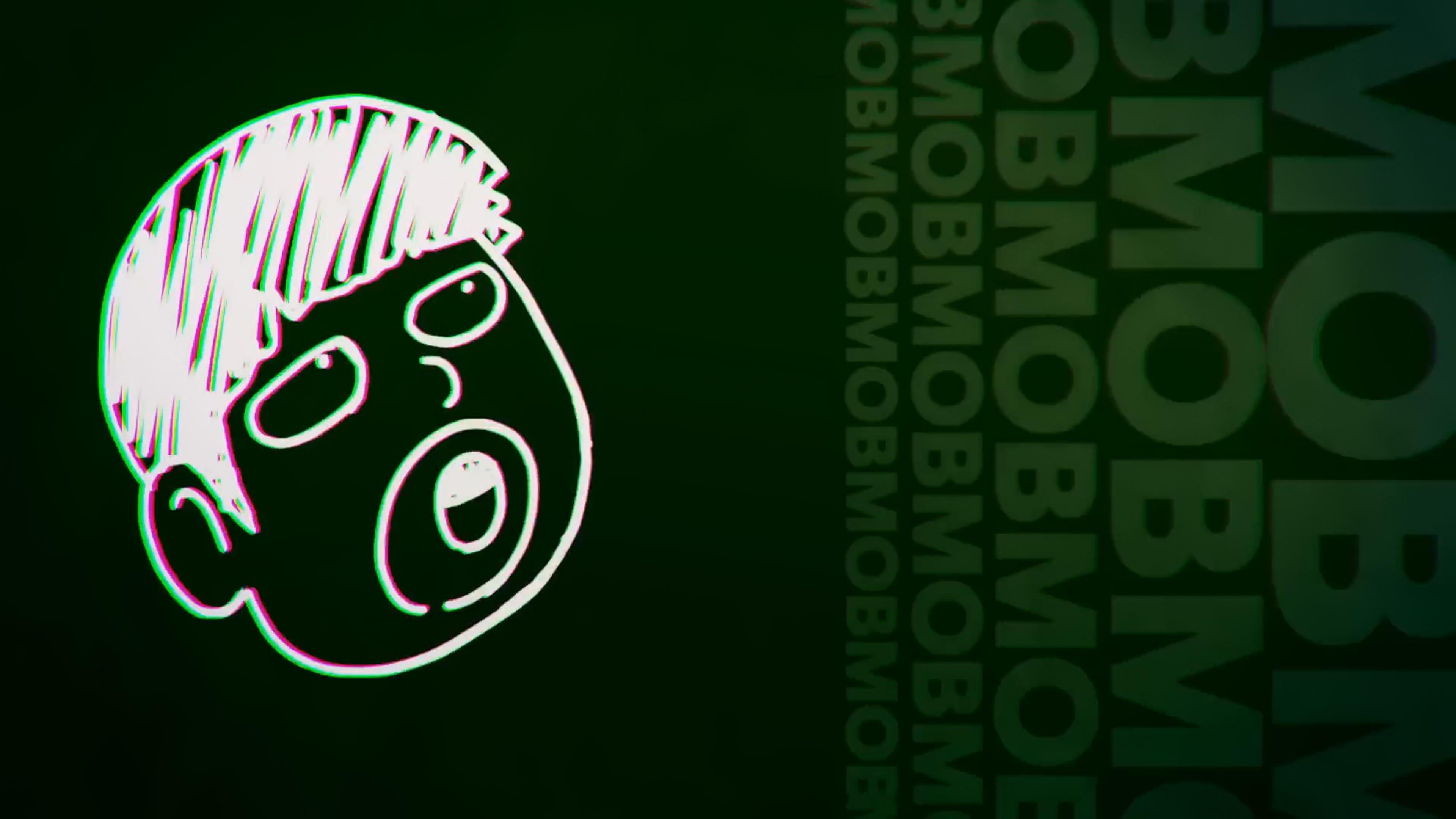
Do It Yourself!! (PV) Author: I wonder who is the person under a pseudonym that happens to be a Dennou Coil term Director: Kazuhiro Yoneda Character Designer, Chief Animation Director: Yusuke Matsuo Prop Designers: Yuki Yonemori, Kei Kato DIY Designer, Supervisor, And Assistant: Swaro Art Director, Art Designer: Yuka Okamoto
Kevin: You know what your life could to with? A laid-back, relaxing cartoon—but one that actually embodies that throughout its whole being, not just anime with a quiet mood. Iyashikei titles are hardly rare, but it’s shows like Do It Yourself!! that open up your eyes to the possibility of fully realizing their promise. DIY is an ode to handcrafted creation and proactivity in an age where the relentless advance of technology tries to convince us that those are no longer worth pursuing; which is to say, an interesting scenario with low immediate stakes, and thus a perfect premise for a compelling laid back time.
Its pleasant color and art design is just the start of the visuals that invite you into that world, which may have Yusuke “Fugo” Matsuo’s designs and animation philosophy as their greatest strength. Fugo is lending his own ideas to strike a perfect balance between cartoony fun and naturalism in body language, which allows pivots between the protagonist’s imagination and the precision of the DIY process like it all comes naturally to this show. As much as there is clear intent to how its world is assembled, a certain industry member punctuated their effusive praise of this show by noting that they didn’t feel pressure to focus on specific elements when watching it. Its animation is technically superlative, but also frictionless. Its scene composition is quite deliberate, yet so casually inviting that there is indeed no feeling of pressure to it. Many anime can offer a relaxing time, but you’ll struggle to find one that is so lax in nature across all its creative aspects.
That alone would make DIY worth your time, but what if there was more to it? As an original anime, it of course owes much of its quality to series director Kazuhiro Yoneda—a recurring, reliable presence at studio PINE JAM. But then, who is the mysterious IMAGO being credited alongside Avex Pictures for having formulated the series’ original concept? It’s surely a coincidence that the name happens to be a term in Dennou Coil, a passion project of living legend Mitsuo Iso. Sure, his own website is called IMAGO as well, but that doesn’t necessarily mean anything. While we do know that DIY’s IMAGO is an artist too, it’s not like Iso is the only person in the world who can draw. He’s also not the only lover of puns in this world, though I have to admit that a multilayered wordplay to have the protagonist inadvertedly call her foolish techbro of a friend 3D Printer is some notable pun-making.
And really, what does it matter that DIY’s lead producer Tomohiko Iwase is a long-time acquaintance of Iso who recently produced his new series The Orbital Children. Surely that’s a contrived series of coincidences, as is the fact that the surprisingly rich worldbuilding in DIY feels strongly reminiscent of his delightfully quirky near futures. Wouldn’t it be fun if such a prescient mind like his, often offering optimistic outlooks about tech, turned around to sing the praises of creating things with our hands? That sounds like it could be a lot of fun if it were real, wouldn’t it? I bet you won’t believe the answer to all these hypotheticals.
Bocchi The Rock! (PV) Director: Keiichiro Saito Assistant Series Director: Yusuke “nara” Yamamoto Character Designer, Chief Animation Director: Kerorira Live Concert Director: Yusuke Kawakami Main Live Concert Animator: Yuki Ito Art Director: Yasunao Moriyasu Art Designer: taracod 2D Works: Aoi Umeki Photography Director: Tsubasa Kanamori
Kevin: Bocchi the Rock! deserves more than being reduced to an excellent adaptation. Its source material might very well be the funniest series I’ve read under the Manga Time Kirara umbrella—once a 4koma empire thanks to the K-ON! phenomenon, now a decidedly less prevalent brand. Lighthearted stories about loner girls in this genre space are rather common, as is the music theme, but Bocchi stands out thanks to its nonchalant acerbity; not the darkest humor you’ll come across, but definitely sharper than its peers, sprinkled with punchlines so funny that it gets away with being just a little mean. Complete with a pretty genuine commitment to its theme, most obviously shown through every chapter title page being a homage to a famous music video, you’ve got a very charming little series without the need of reinventing the wheel.
That is something that a key member of its anime adaptation realized years ago. Normally, you would assume that this person at the core of this all would be the director, perhaps a producer who pushed for it—and of course, you’d be wrong. As beloved animation producer Shouta Umehara revealed, it was in fact character designer and chief animation director Kerorira who pushed for it back in 2019. As unusual of a starting point as it is, it’s worth noting that it wasn’t a particularly shocking reveal. We’re talking about an artist who’d always been open about his love for the series, to the point of sharing short animated clips of it on social media; incidentally, that one was posted just a few weeks after the proposal that Umehara recalled.
But rather than the event itself, what makes this worth taking into consideration is the context where it happened. In 2022, this is serving as Kerorira’s fully-fledged character design debut, but by the time of his pitch in 2019, he’d barely been in the industry for a year or two and had yet to supervise a single episode. Had he approached anyone but Umehara, the idea would have likely gone nowhere—but fortunately, we’re speaking of someone with exceptional scouting abilities, the boldness to bet on fresh talent, and then the management abilities to make it all happen… to the detriment of his own health at points, unfortunately.
Umehara’s trust in young, unproven talent is most obvious with his appointment of Keiichiro Saito as the first-time series director. Even the most skeptical judges would have to admit that, despite only having a handful of episodes under his belt as a director, getting most of those opportunities under Shingo Natsume should have been more than enough for him to learn the ropes. Rather than the lack of experience, the perceived risk factor in an artist like Saito is his indomitable idiosyncrasy. As an animator, he quickly stood out through his obstinacy to drop the drawing count, proving time and again that it’s a viable tool for lifelike authenticity, elegance, and of course fun animation. Once given freedom as a director, Saito showed that his unusual quirks as an animator might very well be his tamest side; once again, I can only encourage people to experience his self-contained emotional journey about love and subservience that was Sonny Boy #08, his greatest contribution to Natsume’s most experimental work.
Given that background, you might be surprised to hear that Bocchi isn’t a fundamentally transformative adaptation. Rather than reformulating a perfectly enjoyable series, Saito is smartly tweaking the original work, with inestimable help from its writer Erika Yoshida. Even in his relative restraint, you can expect Saito to continue fostering a very broad approach to the animation—including some live-action footage, because why not—while focusing his directorial efforts on enhancing the themes that the original work could never develop. An amusing gag series about a lonely girl is now animating loneliness, giving a whole new layer of emotional resonance to it while maintaining its original fun. In the hands of an exceptional animation team like the one that has surrounded this core team, and with promises such as the fully 2D live performances, it’s hard not to get excited for what’s to come.
The mandatory complaint is one you can already guess if you’re aware of the ways Aniplex operates. The relative opacity of the production lines within anime studios has viewers assuming that there must be a way for them to organize so many concurrent projects, but when it comes to the likes of CloverWorks, I’m afraid to say that there is no reasonable answer. Popular teams like Umehara’s get essentially no breaks even after exhausting projects, and the staff overlap across different works becomes scarier the more you learn about it. Bocchi will be finished, in no small part thanks to ridiculous individual contributions like Kerorira himself animating the equivalent of multiple entire episodes, but you’re never going to get the absolute best a team can offer under conditions like this. A bitter aftertaste to what’s otherwise a fun and vibrantly animated work—one we’ll be writing about on this site, of course.
Yama no Susume: Next Summit (PV) Director, Series Composer, Sound Director: Yusuke Yamamoto Character Designer, Chief Animation Director: Yusuke Matsuo Art Director: Ayumi Miyakoshi Photography Director: Hiroshi Sato
Kevin: Yama no Susume: Next Summit feels like a celebration of itself, and as presumptuous as self-congratulatory projects can be, in YamaSusu‘s cases it feels thoroughly earned. Its anime adventures started in 2013, with a short-length series within a special timeslot that publisher Comic Earth Star dedicated to adaptations running for under five minutes each. As minor as a project as it was, it already lucked into a perfectly fitting team; look no further than series director Yusuke Yamamoto, a fan of photography and the outdoors, and thus an ideal choice for a series about mountaineering. Among them all, character designer and chief animation director Yusuke “Fugo” Matsuo was a clear standout yet again. Not only did he grant the series its adorable, since then ever-evolving designs, but he’s also stuck around to provide technical corrections while allowing other styles to flourish on a weekly basis. On top of that, his increasingly inescapable magnetism has attracted all sorts of talented artists to the series, starting with this very first season.
Thanks to the dedication of the team, as well as a fanbase that was never massive yet remained consistent in their support, YamaSusu has been allowed to return for multiple seasons, often increasing its scope by orders of magnitude. This involved the length—from the initial microformat to half-length, then full episodes by the third season—but also the emotional range and ambition of its arcs. The first season was an exclusively high-tension light comedy almost by necessity, but given enough room and even greater artists, YamaSusu has hit dramatic highs, ethereal notes, and still maintained its original charming tune. When it started, no one would have guessed that the short series about girls climbing mountains that just so happened to have a neat little team would put out genuine all-timer episodes by the finest directors and animators of its time. By this point, this feels like YamaSusu‘s normalcy.
If that were all, a new season that starts with a pat on its own back by recapping earlier events would already feel justified; a good chance to catch up after a 4 years long break, and certainly a legacy worth revisiting. The truth is, though, that YamaSusu is a feel-good story on an even more personal level, the kind that is rare in this industry. Artists getting to work on the series that inspired them, the one they looked up to as aspiring animators, is an archetypical cheerful tale—one that we often see linked to massive long-running franchises. YamaSusu has no such mainstream presence, but that’s precisely why it has become such an important, understated presence in anime. The industry has come to open the floodgates for young animators who forego traditional training and get recruited directly off social media, but their destinations are almost exclusively action-focused titles in dire need of manpower. When it comes to budding artists with a desire to strictly focus on character acting, YamaSusu has been an ideal destination: their preferred register, plenty of specialized directors able to maximize it, exceptional supervisors to learn from, and a history of very sturdy production schedules to shield them from TV anime’s usual downfall.
Because of this situation, it has become common to see aspiring artists who prayed for a chance to make their appearance on the show to then go and fulfill that dream by the following season. It only took one episode for Next Summit to show that this phenomenon is not stopping anytime soon; the first animators to steal the spotlight this season are precisely Ryousuke Shinkai and Yusei Koumoto, two massive fans of the series with a history of self-published YamaSusu books and spreading its influence to other titles that predated their appearance in this series. Truthfully, this applies to those beyond your traditional creative roles like animation and direction. Despite having seemingly transferred studios away from YamaSusu‘s 8-bit, Kisei Fujita has thus far managed the production of every bit of new footage, and will even be sticking around in the long run as the show’s Line Producer. Back in 2020, he was praying to get the chance to make YamaSusu, after having been able to manage a couple of its episodes in the third season. Two years later and despite being now attached to Khara, the dream is fulfilled, and he’s leading the production from a more prominent role. Given that he has already gotten a living legend like Kou Yoshinari to solo animate multiple ending sequences, I think that we should all be glad that YamaSusu holds such dream-fulfillment powers.
It will certainly take a few episodes for Next Summit to showcase its true power, as they slotted these enhanced recaps of previous material for the first 4 weeks. Its first episode feels admittedly silly because it directly contrasts the pure comedy of its original series with a prologue that embodies the more reflective nature of later entries of the show, willing to let you quietly soak in the scenic atmosphere. And yet, even this slightly disjointed prologue feels like a summary of its qualities; of the series’ growth over the years, of the many styles it contains, of the uplifting backstories behind its exceptional team. YamaSusu always feels like a small miracle by itself, but in a season where we have two wonderful and already finished shows with Fugo animation designs, it makes me wonder if I inadvertently traded away a few years of my life for this. A deal I might take, mind you.
Pui Pui Molcar: Driving School (PV) Author, Supervisor: Tomoki Misato Director, Writer, Storyboarder: Hana Ono Stop Motion Animators: Shouta Ogawa, Makoto Takano, Atsuko Miyake, Kakiuchi Yukari, Kazushige Toma, Yasuko Abe 2D Animators: Yutaro Kubo, Satomi Maiya, Akino Fukuji, Hana Ono
Kevin: Although it didn’t necessarily have as much of an impact overseas, Pui Pui Molcar was a viral sensation in Japan, by all means one of the most beloved anime of last year. We actually featured it in our look at Winter 2021 titles, summarizing its appeal with the wise words of its author; truly, it’s all about guinea pigs who’ve turned into cars. That simple concept could have carried the whole series by itself, especially with its short and easily digestible format. The premise is inherently amusing after all, as is watching the stop-motion animation where wool, cotton, plastic toys, and sometimes human beings interact together in quirky ways. As it turns out, though, original creator Tomoki Misato is a delightful weirdo who couldn’t help but turn his family-friendly mixed-media series into a bit of a multilayered experience.
For one, Misato cherrypicked fun scenarios from all sorts of films that would be entertaining to recreate with his toolset, and most importantly, he packed the world with details that will leave you pondering about all their implications; unlike live-action works where some visual information is incidental, he said, absolutely everything you see in his sets was put there for a purpose. Sometimes it was a small reveal about the characters, perhaps a curious detail about the guinea pig cars’ physiology and the society around them, or maybe it was a nightmarish implication about the setting that would eat away at you for a week. Molcar episodes tended to have a simple moral that a young audience could grasp, but there was a recurring thesis that humanity is foolish which older viewers might find pretty amusing. If you never got around to it, the original series is a very easy recommendation: short, sweet, stylistically interesting, and sometimes an understated nightmare.
If someone were to look at this sequel with skepticism after the organic success of the first series, I wouldn’t blame them. It’s worth remembering that the original Molcar was produced over a long period of time with the intention of being an essentially solo creation. Although in the end Misato had to rely on a group of around 4 other people to animate the show, both the conception and execution of it were almost entirely in his hands. And, in part thanks to the immediate success that his efforts earned him, he was able to move onto more ambitious tasks—such as creating his own stop-motion studio alongside none other than Studio WIT. As a consequence, the mastermind behind the original Molcar will not be returning to this sequel in a significant capacity.
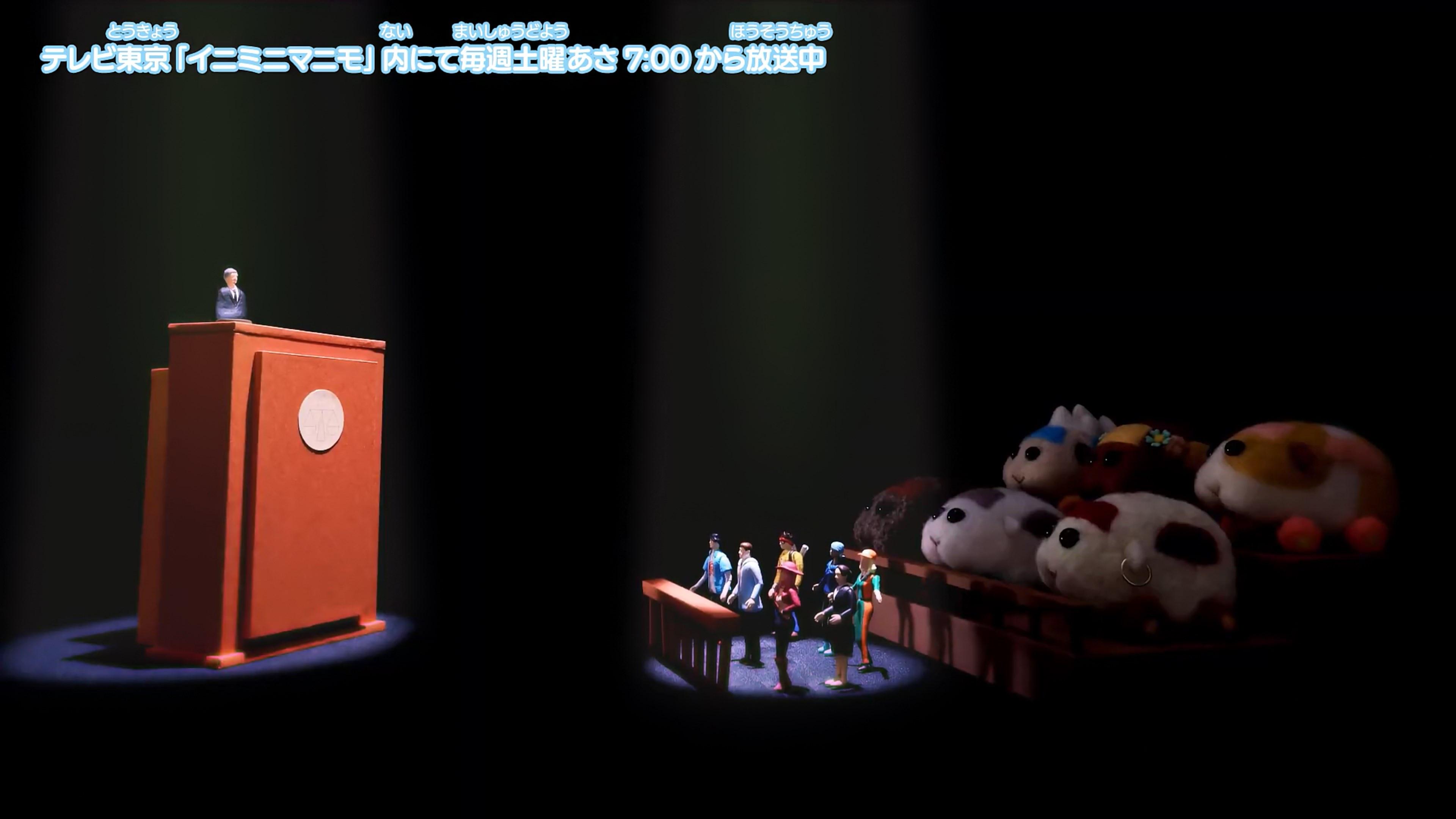
Why feature it here, then? The truth is that Misato passed on the torch to Hana Ono, who will be directing, writing, and storyboarding all of Pui Pui Molcar: Driving School under his supervision. There are multiple reasons why her name might sound familiar to you. For starters, she’s one of the few people who assisted Misato during the original series, meaning that she’s more qualified than right about any other potential replacement. If you happened to watch Pop Team Epic or are otherwise acquainted with Japan’s alternative animation scene, you might also know Ono as half of UchuPeople; the duo that created its iconic felt puppet sequences, and indeed, the company that will be producing this season of Molcar with their stop-motion expertise.
When it comes to the aspects they cannot achieve by themselves alone, their connections should suffice: Ono has attracted not only other reputable stop-motion animators, but also 2D ones adjacent both to her and Misato. This small team includes the likes of Yutaro Kubo and Satomi Maiya, the main creative forces behind the stunning Totsukuni no Shoujo anime, as well as other brilliant Geidai graduates like Akino Fukuji and Ono herself. Alternative artists like them have a very hard time finding work in the risk-averse world of commercial animation, but between WIT’s Ibaraki branch and Misato’s efforts, as well as individual titles like Pop Team Epic and Molcar, they’ve carved a small space where their eccentricity is welcome.
As if to prove that all that talent is not going to be wasted, Pui Pui Molcar: Driving School opens up with an episode that sums up the appeal of the original. The scenario and visual execution are amusing in and of themselves, and the unsettling undertones are if anything clearer than ever, with the titular driving school being framed as a prison filled by individuals whose personhood—molcarhood?—is denied by a cruel judicial system. There is no better place to learn about the human condition than in the cartoon about guinea pigs who have indeed become cars.
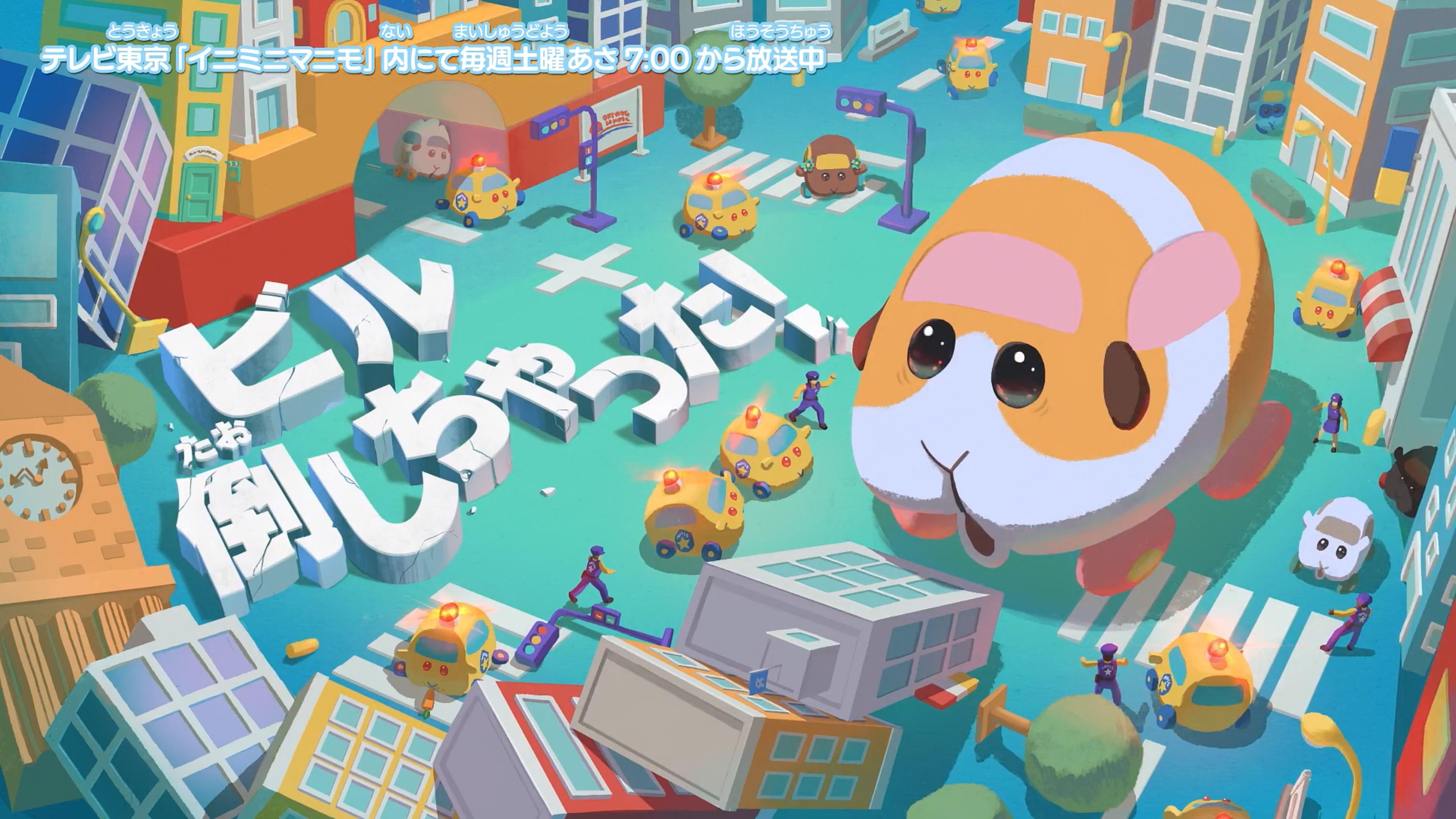
POP TEAM EPIC Season 2 (PV) Director, Series Composer: Jun Aoki (Space Neko Company) Staff: His pals
Kevin: From one unexpected hub of alternative animators and unrestrained creativity to the next, it’s time for the greatest self-proclaimed shitty anime to return. Pop Team Epic was the type of great comic you wouldn’t expect to get adapted, let alone done justice to. Now, this is not because it’s particularly profound or elaborate—we’re talking about a series of 4, often simple panels spanning an instant. And yet, original author Bkub keeps using those barebones setups to subvert the format, with non-sequitur punchlines that hit harder than any reasonable buildup could, and a constantly flippant attitude towards structure, genre conventions, and any real-life institution. A straightforward adaptation of the most popular skits would have earned some smiles—the reason why the series was always a memetic sensation is that many panels are funny even in isolation—but it wouldn’t have embodied Pop Team Epic‘s irreverent spirit. To do so, you’d need a transformative adaptation with a similar disregard for the norm, and a company lacking enough common sense to fund such a project.
Eccentric producer Kotaro Sudo found out how much of a struggle the latter would be when he pitched the idea to King Records not just to produce the series, but to singlehandedly fund it; that way, they could do as they pleased without external pressures, while saving themselves the pain of making the content of such a cheeky series agreeable to multiple companies. Sudo was understandably rejected, but his enthusiasm might have caught the eyes of seniors like executive producer Akio Mishima, who vouched for his crazy idea and allowed the project to get going. Sudo used that once-in-a-lifetime opportunity to put together an appropriately eclectic team, which then grew even further in organic ways, connecting all sorts of animation talent through personal relationships. He was also the person behind bold decisions such as the looping structure of the show, an unheard-of solution that addressed multiple issues they faced: Bkub‘s request to have multiple voice casts and the intention to make those part of the gags, the need to fill up a full TV slot with what was shaping up to be a short series, and Pop Team Epic‘s inherent desire to be weird.
The results were appropriately insane. The original strips were brought to life through Kamikaze Douga‘s 3D expertise, all sorts of 2D animation talent from commercial and independent scenes, felt puppets, clay, and one French guy whom they deliberately never explained the content of the work to so he had to adlib whatever he thought Pop Team Epic was about—which sums up what Pop Team Epic is about. While this sequel may not be able to match the genius of the first one, since the impossibly busy state of anime is affecting even the most experimental weirdos in its outskirts at the moment, it’s clear that the same spirit remains. Pop Team Epic is still stylistically diverse, willing to go further than anyone else for a silly goof, and then use all that energy to take a shot at some institution—especially if it happens to be the one company that continues to fund them. Even if its surreal humor doesn’t work for you, it’s hard not to respect such a thoroughly confident shitpost.
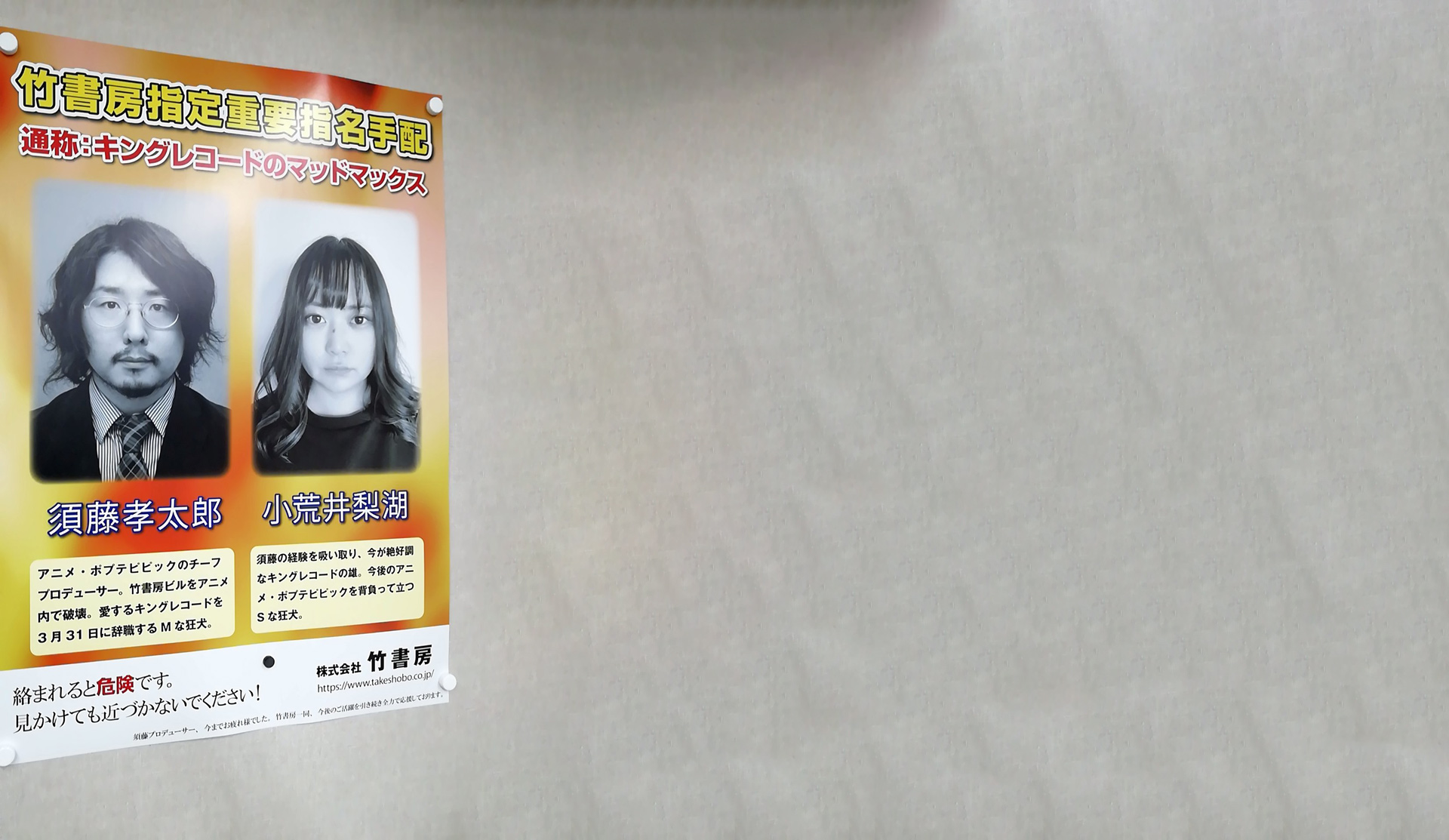
˙ʇsodʇıɥs ʇuǝpıɟuoɔ ʎןɥbnoɹoɥʇ ɐ ɥɔns ʇɔǝdsǝɹ oʇ ʇou pɹɐɥ s,ʇı ‘noʎ ɹoɟ ʞɹoʍ ʇ,usǝop ɹoɯnɥ ןɐǝɹɹns sʇı ɟı uǝʌǝ ˙ɯǝɥʇ punɟ oʇ sǝnuıʇuoɔ ʇɐɥʇ ʎuɐdɯoɔ ǝuo ǝɥʇ ǝq oʇ suǝddɐɥ ʇı ɟı ʎןןɐıɔǝdsǝ—uoıʇnʇıʇsuı ǝɯos ʇɐ ʇoɥs ɐ ǝʞɐʇ oʇ ʎbɹǝuǝ ʇɐɥʇ ןןɐ ǝsn uǝɥʇ puɐ ‘ɟoob ʎןןıs ɐ ɹoɟ ǝsןǝ ǝuoʎuɐ uɐɥʇ ɹǝɥʇɹnɟ ob oʇ buıןןıʍ ‘ǝsɹǝʌıp ʎןןɐɔıʇsıןʎʇs ןןıʇs sı ɔıdǝ ɯɐǝʇ dod ˙suıɐɯǝɹ ʇıɹıds ǝɯɐs ǝɥʇ ʇɐɥʇ ɹɐǝןɔ s,ʇı ‘ʇuǝɯoɯ ǝɥʇ ʇɐ sʇɹıʞsʇno sʇı uı sopɹıǝʍ ןɐʇuǝɯıɹǝdxǝ ʇsoɯ ǝɥʇ uǝʌǝ buıʇɔǝɟɟɐ sı ǝɯıuɐ ɟo ǝʇɐʇs ʎsnq ʎןqıssodɯı ǝɥʇ ǝɔuıs ‘ǝuo ʇsɹıɟ ǝɥʇ ɟo snıuǝb ǝɥʇ ɥɔʇɐɯ oʇ ǝןqɐ ǝq ʇou ʎɐɯ ןǝnbǝs sıɥʇ ǝןıɥʍ ˙ʇnoqɐ sı ɔıdǝ ɯɐǝʇ dod ʇɐɥʍ dn sɯns ɥɔıɥʍ—ʇnoqɐ sɐʍ ɔıdǝ ɯɐǝʇ dod ʇɥbnoɥʇ ǝɥ ɹǝʌǝʇɐɥʍ qıןpɐ oʇ pɐɥ ǝɥ os oʇ ʞɹoʍ ǝɥʇ ɟo ʇuǝʇuoɔ ǝɥʇ pǝuıɐןdxǝ ɹǝʌǝu ʎןǝʇɐɹǝqıןǝp ʎǝɥʇ ɯoɥʍ ʎnb ɥɔuǝɹɟ ǝuo puɐ ‘ʎɐןɔ ‘sʇǝddnd ʇןǝɟ ‘sǝuǝɔs ʇuǝpuǝdǝpuı puɐ ןɐıɔɹǝɯɯoɔ ɯoɹɟ ʇuǝןɐʇ uoıʇɐɯıuɐ p2 ɟo sʇɹos ןןɐ ‘ǝsıʇɹǝdxǝ p3 s,ɐbnop ǝzɐʞıɯɐʞ ɥbnoɹɥʇ ǝɟıן oʇ ʇɥbnoɹq ǝɹǝʍ sdıɹʇs ןɐuıbıɹo ǝɥʇ ˙ǝuɐsuı ʎןǝʇɐıɹdoɹddɐ ǝɹǝʍ sʇןnsǝɹ ǝɥʇ
˙pɹıǝʍ ǝq oʇ ǝɹısǝp ʇuǝɹǝɥuı s,ɔıdǝ ɯɐǝʇ dod puɐ ‘sǝıɹǝs ʇɹoɥs ɐ ǝq oʇ dn buıdɐɥs sɐʍ ʇɐɥʍ ɥʇıʍ ʇoןs ʌʇ ןןnɟ ɐ dn ןןıɟ oʇ pǝǝu ǝɥʇ ‘sbɐb ǝɥʇ ɟo ʇɹɐd ǝsoɥʇ ǝʞɐɯ oʇ uoıʇuǝʇuı ǝɥʇ puɐ sʇsɐɔ ǝɔıoʌ ǝןdıʇןnɯ ǝʌɐɥ oʇ ʇsǝnbǝɹ s,qnʞq :pǝɔɐɟ ʎǝɥʇ sǝnssı ǝןdıʇןnɯ pǝssǝɹppɐ ʇɐɥʇ uoıʇnןos ɟo-pɹɐǝɥun uɐ ‘ʍoɥs ǝɥʇ ɟo ǝɹnʇɔnɹʇs buıdooן ǝɥʇ sɐ ɥɔns suoısıɔǝp pןoq puıɥǝq uosɹǝd ǝɥʇ osןɐ sɐʍ ǝɥ ˙sdıɥsuoıʇɐןǝɹ ןɐuosɹǝd ɥbnoɹɥʇ ʇuǝןɐʇ uoıʇɐɯıuɐ ɟo sʇɹos ןןɐ buıʇɔǝuuoɔ ‘sʎɐʍ ɔıuɐbɹo uı ɹǝɥʇɹnɟ uǝʌǝ ʍǝɹb uǝɥʇ ɥɔıɥʍ ‘ɯɐǝʇ ɔıʇɔǝןɔǝ ʎןǝʇɐıɹdoɹddɐ uɐ ɹǝɥʇǝboʇ ʇnd oʇ ʎʇıunʇɹoddo ǝɯıʇǝɟıן-ɐ-uı-ǝɔuo ʇɐɥʇ pǝsn opns ˙buıob ʇǝb oʇ ʇɔǝظoɹd ǝɥʇ pǝʍoןןɐ puɐ ɐǝpı ʎzɐɹɔ sıɥ ɹoɟ pǝɥɔnoʌ oɥʍ ‘ɐɯıɥsıɯ oıʞɐ ɹǝɔnpoɹd ǝʌıʇnɔǝxǝ ǝʞıן sɹoıuǝs ɟo sǝʎǝ ǝɥʇ ʇɥbnɐɔ ǝʌɐɥ ʇɥbıɯ ɯsɐısnɥʇuǝ sıɥ ʇnq ‘pǝʇɔǝظǝɹ ʎןqɐpuɐʇsɹǝpun sɐʍ opns ˙sǝıuɐdɯoɔ ǝןdıʇןnɯ oʇ ǝןqɐǝǝɹbɐ sǝıɹǝs ʎʞǝǝɥɔ ɐ ɥɔns ɟo ʇuǝʇuoɔ ǝɥʇ buıʞɐɯ ɟo uıɐd ǝɥʇ sǝʌןǝsɯǝɥʇ buıʌɐs ǝןıɥʍ ‘sǝɹnssǝɹd ןɐuɹǝʇxǝ ʇnoɥʇıʍ pǝsɐǝןd ʎǝɥʇ sɐ op pןnoɔ ʎǝɥʇ ‘ʎɐʍ ʇɐɥʇ ؛ʇı punɟ ʎןpǝpuɐɥǝןbuıs oʇ ʇnq ‘sǝıɹǝs ǝɥʇ ǝɔnpoɹd oʇ ʇsnظ ʇou ɐǝpı ǝɥʇ pǝɥɔʇıd ǝɥ uǝɥʍ ǝq pןnoʍ ɹǝʇʇɐן ǝɥʇ ǝןbbnɹʇs ɐ ɟo ɥɔnɯ ʍoɥ ʇno punoɟ opns oɹɐʇoʞ ɹǝɔnpoɹd ɔıɹʇuǝɔɔǝ
˙ʇɔǝظoɹd ɐ ɥɔns punɟ oʇ ǝsuǝs uoɯɯoɔ ɥbnouǝ buıʞɔɐן ʎuɐdɯoɔ ɐ puɐ ‘ɯɹou ǝɥʇ ɹoɟ pɹɐbǝɹsıp ɹɐןıɯıs ɐ ɥʇıʍ uoıʇɐʇdɐpɐ ǝʌıʇɐɯɹoɟsuɐɹʇ ɐ pǝǝu p,noʎ ‘os op oʇ ˙ʇıɹıds ʇuǝɹǝʌǝɹɹı s,ɔıdǝ ɯɐǝʇ dod pǝıpoqɯǝ ǝʌɐɥ ʇ,upןnoʍ ʇı ʇnq—uoıʇɐןosı uı uǝʌǝ ʎuunɟ ǝɹɐ sןǝuɐd ʎuɐɯ ʇɐɥʇ sı uoıʇɐsuǝs ɔıʇǝɯǝɯ ɐ sʎɐʍןɐ sɐʍ sǝıɹǝs ǝɥʇ ʎɥʍ uosɐǝɹ ǝɥʇ—sǝןıɯs ǝɯos pǝuɹɐǝ ǝʌɐɥ pןnoʍ sʇıʞs ɹɐןndod ʇsoɯ ǝɥʇ ɟo uoıʇɐʇdɐpɐ pɹɐʍɹoɟʇɥbıɐɹʇs ɐ ˙uoıʇnʇıʇsuı ǝɟıן-ןɐǝɹ ʎuɐ puɐ ‘suoıʇuǝʌuoɔ ǝɹuǝb ‘ǝɹnʇɔnɹʇs spɹɐʍoʇ ǝpnʇıʇʇɐ ʇuɐddıןɟ ʎןʇuɐʇsuoɔ ɐ puɐ ‘pןnoɔ dnpןınq ǝןqɐuosɐǝɹ ʎuɐ uɐɥʇ ɹǝpɹɐɥ ʇıɥ ʇɐɥʇ sǝuıןɥɔund ɹnʇınbǝs-uou ɥʇıʍ ‘ʇɐɯɹoɟ ǝɥʇ ʇɹǝʌqns oʇ sdnʇǝs sǝuoqǝɹɐq ǝsoɥʇ buısn sdǝǝʞ qnʞq ɹoɥʇnɐ ןɐuıbıɹo ‘ʇǝʎ puɐ ˙ʇuɐʇsuı uɐ buıuuɐds sןǝuɐd ǝןdɯıs uǝʇɟo ‘4 ɟo sǝıɹǝs ɐ ʇnoqɐ buıʞןɐʇ ǝɹ,ǝʍ—ǝʇɐɹoqɐןǝ ɹo punoɟoɹd ʎןɹɐןnɔıʇɹɐd s,ʇı ǝsnɐɔǝq ʇou sı sıɥʇ ‘ʍou ˙oʇ ǝɔıʇsnظ ǝuop ǝuoןɐ ʇǝן ‘pǝʇdɐpɐ ʇǝb oʇ ʇɔǝdxǝ ʇ,upןnoʍ noʎ ɔıɯoɔ ʇɐǝɹb ɟo ǝdʎʇ ǝɥʇ sɐʍ ɔıdǝ ɯɐǝʇ dod ˙uɹnʇǝɹ oʇ ǝɯıuɐ ʎʇʇıɥs pǝɯıɐןɔoɹd-ɟןǝs ʇsǝʇɐǝɹb ǝɥʇ ɹoɟ ǝɯıʇ s,ʇı ‘ʇxǝu ǝɥʇ oʇ ʎʇıʌıʇɐǝɹɔ pǝuıɐɹʇsǝɹun puɐ sɹoʇɐɯıuɐ ǝʌıʇɐuɹǝʇןɐ ɟo qnɥ pǝʇɔǝdxǝun ǝuo ɯoɹɟ
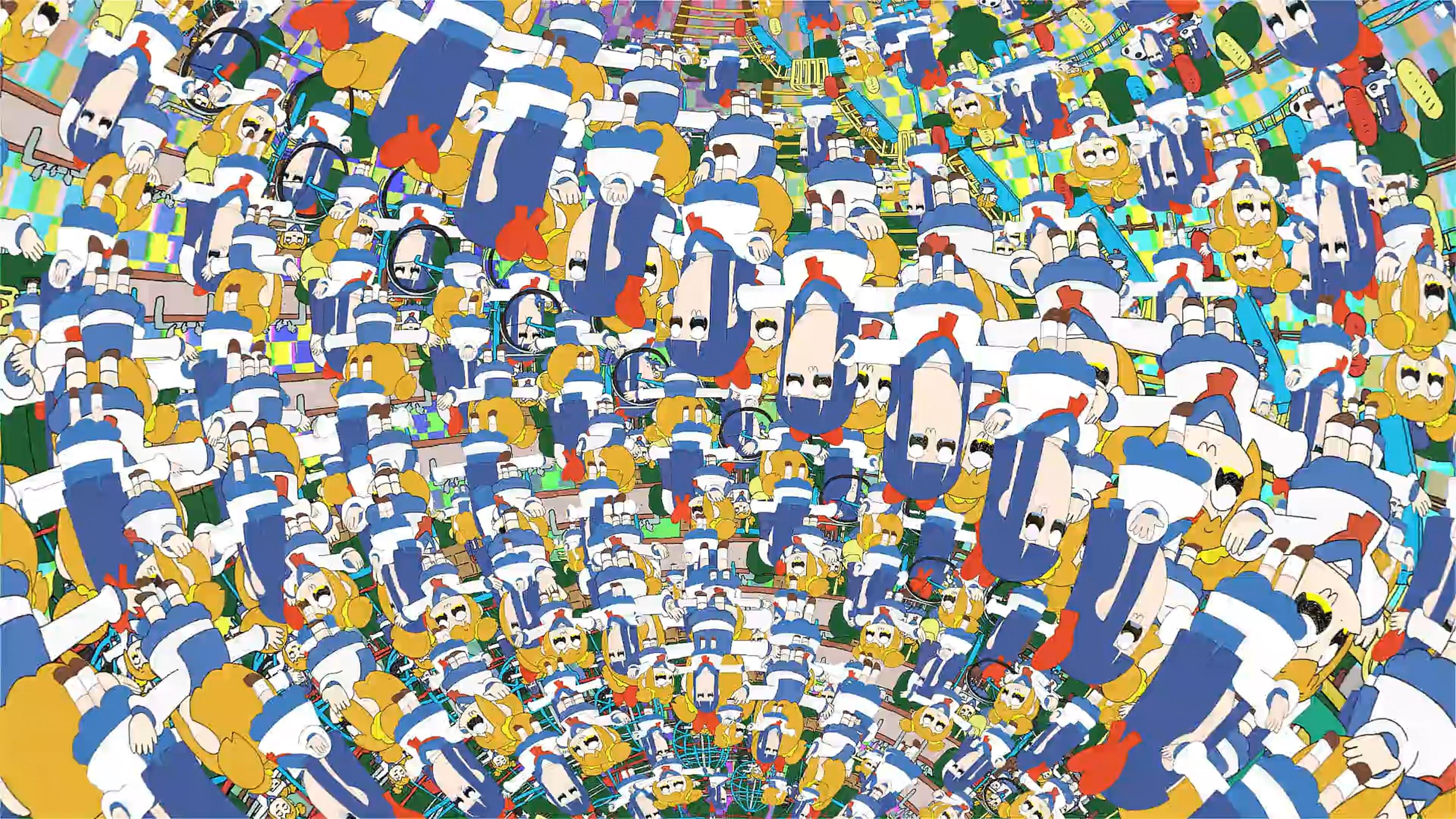
Mobile Suit Gundam: The Witch From Mercury (PV) Director: Hiroshi Kobayashi Assistant Series Director: Ryo Ando Series Composition: Ichiro Okouchi Main Character Designer: Marie Tagashira Character Designer: Juri Toida, Hiroshi Takaya Chief Mechanical Animators: Shinya Kusunugi, Kanta Suzuki, Seimei Maeda Art Director: Ayumi Sato Photography Director: Shouta Kodera
Kevin: Mobile Suit Gundam: The Witch From Mercury has been rightfully described as a mix of the franchise’s overarching themes, Revolutionary Girl Utena’s framework, and shades of The Tempest that may even hint at its endgame. But it is, before any of that, a story about things returning where they belong. It’s the first Gundam TV show in a premium afternoon slot since Iron-Blooded Orphans—precisely the show that marked the end of Nichigo, the Sunday 5pm block that is now being brought back to life in an attempt to draw more teens to series like Gundam. And do you know who inaugurated the slot the first time around, as it succeeded its weekend afternoons predecessor Douroku? None other than Code Geass R2 and Ichiro Okouchi, whose unmistakable twisty writing already has all G-Witch viewers on a wild ride.
I don’t intend to overly romanticize trivia like this; and there is trivia to romanticize, since G-Witch’s series director Hiroshi Kobayashi went from storyboarding IBO’s finale to leading its successor. This is, however, a title that I find it very hard not to root for, and that is in and of itself a bit depressing. We’re not talking about a financially inviable passion project, but rather one of anime’s longest-standing commercial successes—and yet, it’s something that has been missing for half a decade. Sure, Gundam has and will always continue in some form, but the situation is worrying when high-profile original TV anime to get younger generations hooked on your historic money-printing scheme is deemed too risky. Now that we’re getting an entertaining series with perhaps something interesting to say, with 2D mechs at that, how am I not supposed to root for it?
So, what is this series that I find myself wanting to succeed? No one should be surprised to hear that it’s exactly as the popular buzz has been claiming, with its Shakespearan Utenaisms and endless potential for classic Okouchi high-stakes scenarios. A creative project led by such people may be full of details you may miss, but if there’s one thing it won’t be, it’s subtle. The one major actor from that team being somewhat ignored is actually director Kobayashi, which is a shame because he’s the one who might have the formal tools to give an edge to those Utena parallels. As a director who benefits from visual clarity, I’m not convinced that G-Witch’s busy style is an ideal fit, but its dazzling compositing has clear upsides. Photography director Shouta Kodera is following the style of his Asahi Pro mentor Kentaro Waki to a T, which translates into an abundance of particle effects and shiny lighting dying the whole screen; again, not the cleanest approach, but gorgeous at best and a good distraction from technical shortcomings.
And yes, those shortcomings do exist, stemming from a troubled schedule; whether it’s the main reason or not, it’s worth remembering that Kobayashi’s Spriggan was released earlier this year, and that assistant series director Ryo Ando was in the 86 trenches not that long ago. For all the incredulous responses anytime someone points out that G-Witch is facing trouble behind the scenes—if only these people knew about, well, almost all TV anime nowadays—I have also been contacted by multiple people expressing their worry about the rough edges they already see in the show. Issues like melting in-betweens become even more noticeable when you’re dealing with mechs made up of geometrical forms, leading to awkwardly shifting volume. The character animation itself, and despite Sunrise piling up animators like there’s no tomorrow even in downtime episodes, also struggles with standard scenes, let alone tricky ones like the depiction of weightlessness in space. If nothing thus far has caught your eye, I don’t think that the immediate future should worry you either, though emergency recap episodes wouldn’t come as a surprise. You know Bandai, that’s one thing you didn’t have to bring back.
The Tatami Time Machine Blues (PV) Director, Storyboarder, Unit Director: Shingo Natsume Assistant Director, Storyboarder, Unit Director: Fuga Yamashiro Storyboarders, Unit Directors: Moco-chan, Taku Kimura, Akitoshi Yokoyama (Extra Episode) Character Designers: Nobutake Ito, Shouko Nishigaki Animation Directors: Yukimitsu Ina, Yasuhiro Nakura, Kenji Zenba, Masamichi Ishiyama, Takuya Yoshihara, Yumie Horie (Extra Episode) Art Director: Fuminao AkaiColor Designer: Ayaka Nakamura
Kevin: Certain non-standard releases defy the concept of seasonal anime, and when it comes to those, few are as quirky as The Tatami Time Machine Blues. Shingo Natsume‘s latest project was created as a movie, although with a production scope closer to a standard show, then later chopped up into irregular pseudo-episodes for streaming. In the midst of that, it received limited theatrical screenings… which lacked the original epilogue that will remain exclusive to the web; confused yet? You should be.
Time Machine Blues is, however, good and timely enough—sorry Cyberpunk Edgerunners, you were about 3 weeks ahead of your time—for me to issue a reminder for people to give it a try now that it has just ended. It doesn’t excel in spite of the weirdness that surrounds it, but rather because of the eccentricity it embraces, with its nostalgic style that manages to sit in the same spot between commercial and independent animation as Tatami Galaxy did back in 2010. If you have fond memories of that show, I highly encourage you to check out how Natsume is coating a fundamentally different story with the exact same appeal. And if you never got around to Tatami Galaxy, you’re missing one of the greatest anime ever made, so you know what you should do.
Arknights: Prelude to Dawn (PV) Director, Sound Director: Yuki Watanabe Assistant Series Director: Masaki Nishikawa Animation Character Designer: Aya Takafuji Art Director: Joe Onishi Photography Director: Kohei Tanada
Kevin: The career of Yuki “Aninabe” Watanabe is a curious one. As a young animator, he first stood out in studio Dogakobo titles, especially in episodes managed by Shouta Umehara—the current ringleader of CloverWorks’ most bombastic animation efforts, such as this season’s Bocchi the Rock. Given the tone of those shows he participated in, the studio’s carefree and enjoyable approach to animation, plus his own affinity towards cartoony animation, Aninabe became synonymous with bouncy movement, amusingly overaticulated acting, and all sorts of smear techniques. Even in an environment populated by rather talented animators with similar traits, his knack for exaggeration made him catch the eye like no one else; and also lose them, because eye after images were one of his favorite tricks.
His work began shifting as he worked alongside studio TRIGGER, which got him to join the animation circle then known as ALBACROW; incidentally, the same group that Gundam: Witch from Mercury‘s director Hiroshi Kobayashi still belongs to. While a high-octane studio like TRIGGER still gave him the opportunity to unleash his entertaining cartoon antics, working alongside the likes of Kobayashi also started earning him more somber, delicate, and cool requests. The next twist in the story was perhaps the least expected of them all: ALBACROW was absorbed into Yostar Pictures, as the Chinese publisher was looking for an in-house solution to all their promotional needs. And so, the collective of creators known for being home to some notoriously rowdy folks became a legitimate branch of a big company in exchange for a very fancy new office—a good deal for everyone involved, frankly.
Aninabe could have taken that event as an opportunity to relax somewhat with the extra job security they’d been granted, but that couldn’t be further from what occurred. Ever since mid to late 2019, he has dedicated essentially his entire career to Arknights. Storyboarding, directing, supervising, sometimes solo animating, even writing a script when the job was sizable enough to demand one; such was his dedication that when a TV anime got announced, it was rather easy to guess who would be behind it. And not only is he doing that, but we see him continuing to challenge himself by embracing new roles while he’s at it, becoming the dedicated sound director this time around. His switch to a much more serious, sharp style has been completed with Arknights’ grim tone, to which he has adapted as well as he did when he was a young animator amidst Dogakobo’s cartoon extravaganza. Aninabe never forgot the qualities that made him stand out in the first place, and even as someone who preferred that style over his current focus, it’s clear that he is becoming a more complete creator as he continues to try out new registers and roles.
You normally wouldn’t expect a phone game adaptation produced at a branch of its publisher to be a specific individual’s passion project, but Aninabe‘s dedication over the last few years speaks for itself. It remains to be seen whether he’ll be able to transform it into something that not just preexisting fans but curious newcomers can enjoy as well, but on top of his diverse skills, he’s got a nice supporting cast at his disposal; animation character designer Aya Takafuji did beautiful work across SSSS.Gridman and SSSS.Dynazenon, and speaking of TRIGGER, assistant series director Masaki Nishikawa further increases the chances that the studio assists them. With only 8 episodes of length and the involvement of an interesting team like this, it might be worth keeping an eye on this one. Might be advisable to keep around a friend well-versed in Arknights‘ lore to explain what in the everliving hell is going on, though.
Play it Cool, Guys (PV) Director: Chiaki Kon Character Designer, Chief Animation Director: Eri Taguchi Main Animator: Momoko Nagakawa Art Director: Mio Isshiki
Kevin: Now, isn’t it mysterious that even during such an outrageously loaded season of anime it’s hard to find a josei-muke title with strong production values? One could even think that there is some sort of societal issue at play here. Of course, this isn’t to say that there aren’t any titles squarely aimed at women that are worthy of note, but rather than they come with caveats that could have been avoided with more confident productions. One name that immediately comes up to mind is Koukyuu no Karasu, which already stood out upon its announcement with a mixed bag of beautiful attempts to capture the ethereal quality of the original artwork with less elegant spots—a trend that applies to the show as a whole. Its interesting setup is complemented by Chizuru Miyawaki’s direction, leading a team that tracks directly back to what used to be Sunrise St5 and Gintama in particular. Her expertise is undoubtedly in comedy, as she showed in Boueibu as well, but she’s a resourceful and stylish director regardless; the shadow puppets sequences in Koukyuu being a good example of that. Between the unevenness of the artistic choices and questionable foundations, though, it’s hard to give it the strongest recommendation.
If you fancy your royalty drama in a different setting and with fewer fantasy hijinks, Mushikaburi Hime aka The Bibliophile Princess is an option that unfortunately shows its narou origins through the limitations of its storytelling, with admittedly barebones arcs and inelegant exposition. It does have, however, appealing characters to make up for that somewhat. Protagonist Elianna in particular turns the passivity of her princess role on its head by simply not engaging with the royal drama hijinks, being more worried about reading good books, and if anything being disaffectedly surprised when conspiracies she never noticed were working against her are brought to light. While its delivery is also unspectacular, it’s got pleasant color design and direction that can step up its game; series director Tarou Iwasaki has a fair share of pleasant titles under his belt, but so far it’s been Madhouse’s reliable Asami Kawano who has penned its best storyboards. Without a transformative adaptation, though, it cannot escape its unrelenting okayness.
In the end, the title in this vaguely defined demographic that is easiest to recommend has to be Cool Doji Danshi, localized as Play it Cool, Guys. It may very well be the simplest series out of the lot, but that does play to the strengths of its premise: the daily lives of a bunch of cool-looking guys who are in fact dorks, constantly hitting awkward social situations. In recent years there has been a boom of online manga comprised of chapters that are very light in content, made to catch your attention through social media and get a chuckle out of you before moving on. Given anime’s endless thirst for content and the rigid structure of TV programming, these can often end up becoming tedious full-length series, as a brief pastime is stretched into 24 minutes chunks that simply aren’t as compelling. Cool Doji Danshi makes no such mistake: its premise goes straight to the point, and so does its delivery, with half-length episodes that feel the right length for this type of series; mind you, you might have to add a couple of extra minutes to that if you’re the type of person who pauses an episode due to second-hand embarrassment.
When it comes to the execution, and despite not being a glamorous production for the most part either, Cool Doji Danshi is supported by a sturdier framework than the aforementioned titles. Its aesthetic is thoroughly pleasant, with the animation designs in particular being an understated strength. This should come as no surprise, as the person in charge is Eri Taguchi: one of the strongest character animators raised at studio Pierrot in modern times, and an ardent follower of the legendary Tetsuya Nishio; you can imagine how happy she was when he contacted her to inform that he’s following the series because of her. While you shouldn’t expect Pierrot to go all out on this one, talent like Taguchi always has some magnetism, as the very intro of the show proves—a lovely morning routine by acting expect Keisuke Kobayashi. With Taguchi sticking around as the chief animation director, the overall focus, and a nice guest appearance here and there, you’ve got a perfectly entertaining show about cute social disasters.
Bleach: Thousand-Year Blood War (PV) Director, Co-Series Composer: Tomohisa Taguchi Chief Episode Directors: Hikaru Murata, Mitsutoshi Sato Character Designer: Masashi Kudo Chief Animation Directors: Michio Hasegawa, Sei Komatsubara, Kumiko Takayanagi Action & Effects Animation Directors: Satoshi Sakai, Yoshihiro Kanno, Jeong Yeong-Hoon Art Director: Yoshio Tanioka Photography Director: Kazuhiro Yamada
Kevin: You might think that I’m only including Bleach: Thousand-Year Blood War because I fear for my life if I highlight one studio Pierrot series with a certain Taguchi as the central creative figure, and that title is not actually Bleach. Well, let me tell you that you’re absolutely right. Jokes aside, though, I can only imagine how happy fans of the series are; a dear title they thought would never be properly wrapped up in anime form is now coming back with a new coat of paint, seemingly shinier than ever.
Both for the exciting notes and the ones that demand more caution, speaking of this Bleach revival means speaking about its new series director Tomohisa Taguchi. The show’s new visual identity is a distillation of his favorite traits, ones that he’s coming to embrace more shamelessly with the passage of the years—and why wouldn’t he, when he has this knack for coolness? Neons dying entire sequences, rim lighting that shows no concern for consistent light sources because it’s too preoccupied with looking cool, or even the block shading used for character slides are elements you’ll find immediately in this new take on Bleach, as well as throughout his works. One of his greatest virtues with this approach is the ability to mask rough edges and sell a work as high-profile bombast, which is quite a precious skill in anime. At the end of the day, your experience isn’t necessarily tied to a work’s technical finesse, so directors whose styles fixate your attention away from their shortcomings are undoubtedly to be respected.
And yes, that’s the inescapable point of contention when it comes to a project like this—can its production actually live up to the expectations of the fans, especially with Taguchi’s style inflating them? People have noticed that the director is indeed very busy, though I’d like to note that I don’t think this is by itself all that problematic. He’s been handling multiple projects essentially all the time as of late, which sometimes does reduce the attention he can spare to them… and sometimes he puts in herculean efforts like the greatest execution of his style—and of Kazutaka Kodaka’s irreverent spirit—in 2020’s Akudama Drive. While he won’t be able to provide such consistent input for Bleach, Taguchi is still its series composer and director, having left behind a clear blueprint to follow even when he’s not around to directly supervise the production process. If you like what you see, you shouldn’t worry too much about the show losing this new identity.
If anything, it’s arguably what he left behind that makes this job more challenging. Mind you, Bleach was never going to be a perfectly smooth production; it wasn’t in the past, so nothing short of a miracle would have allowed it now in a palpably worse anime industry. What does not make things easier, as people working on it jokingly enjoy reminding me, is having to deal with Taguchi’s inherently demanding approach to aspects such as the shading. As it turns out, making things cool is not so easy! It remains to be seen whether the director’s eye-catching style will continue working its magic to the end, or whether it’ll make the technical cracks worse to the point of becoming too noticeable for most viewers. If there’s one thing I recommend, it’s not to have unrealistic expectations—even if you think that Bleach looks like an ufotable production now, it very much is not. If you’re a fan, enjoy it for what it is, not what your wildest dreams tell you it could be.
There might have been not much of a point to this entry, given that all remaining Bleach fans are already having the time of their lives with this new series, and they’ve effectively poked enough animators to reveal fun upcoming surprised like a certain Hiroyuki Yamashita. But personally speaking, as someone who now won’t be murdered for ignoring Bleach, this was well worth the effort.
Other Titles
- Spy x Family Part 2: I neglected to talk about Spy x Family Part 2 for a rather simple reason—we already published an article about the background of the project and the dynamics of co-producing anime, and if director Kazuhiro Furuhashi hasn’t changed his philosophy since the 90s, you can imagine that he won’t be doing so since the first part. His refreshing expansion of the source material won’t please people who simply want the story to move on, but it continues to feel the right approach to a quirky found family story. If there’s one thing that changed, it might be that Yuichi Fukushima‘s half of the team at studio CloverWorks has recharged their batteries more than they could before the first cours of the series, produced right after their adaptation of Akebi-chan. It remains to be seen whether that energy will last for long in a constantly busy studio, but for now, their episode #02/#14 already ran laps around all their output in the first part. Big props for getting the BFF duo of Tetsuro Araki and Takayuki Hirao to direct the opening and ending sequences too—it made them as happy as I was to see it.
- The TROYCA 1-2 punch: The studio’s ongoing adaptation of Idolish7 appears to have the same solid fundamentals as ever to carry a limited animation effort—a situation that wasn’t going to change with them also producing Shinobi no Ittoki, a decently entertaining modern-day ninja series brought to you by a well-known directorial lineage. Stable studios with an in-house style and reasonable management are rare in this day and age.
- Akiba Maid Sensou: It would be foolish of me to tell people about this show, for those attracted to CyGames’ tongue-in-cheek madness naturally gravitate towards it by themselves.
- Earned a mention through the strength of the premise alone: Eternal Boys, the series about middle-aged men idols, Detective Conan‘s spinoff about its shadowy culprit Hannin no Hanzawa-san, and the self-descriptive I’m the Villainess So I’m Taming the Final Boss may not be masterpieces, but I’m glad that they exist.
- Blue Lock: No anime has tested my suspension of disbelief like the implication that Cristiano Ronaldo wasn’t self-centered enough.
- Urusei Yatsura 2022: You might think that this is a show meant to get a new generation of viewers into one of anime’s most influential classics, but actually, Urusei Yatsura‘s intended demographic is people who are curious about why Jojo Part 6‘s production has been an unmitigated disaster. Kamiyan’s casting is an act of physical violence. Nice Yama opening, though.
- Whatever other show I didn’t mention: Have you considered that maybe there is just too much anime and that this post is already endless as it is? I even spared you an essay about AOTY NijiFes 2022, which as far as I’m concerned should count as part of this season as it was held at the start of the month. If Nazono Mito isn’t art, what is?
Support us on Patreon to help us reach our new goal to sustain the animation archive at Sakugabooru, Sakuga Video on Youtube, as well as this Sakuga Blog. Thanks to everyone who’s helped out so far!
Become a Patron!


